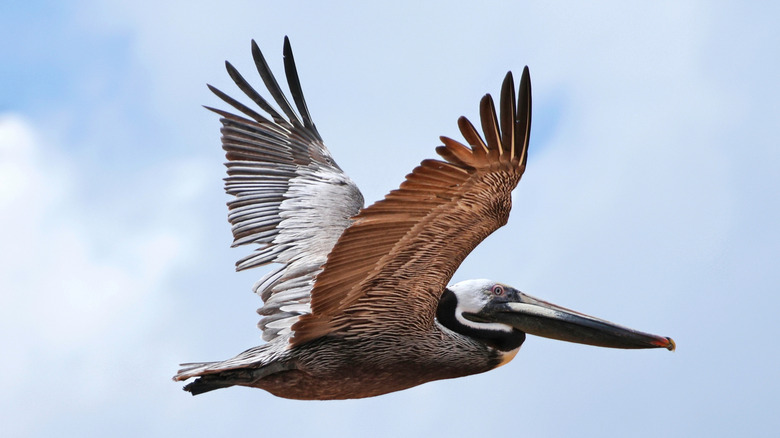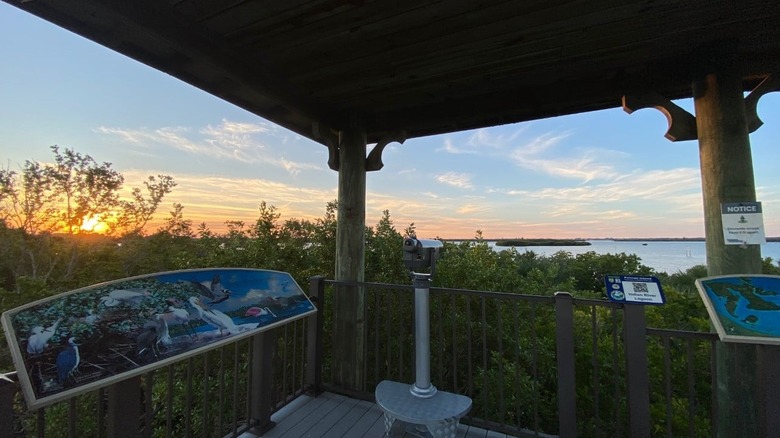This Hidden Gem Wildlife Refuge In Florida Is A Nature Lover's Dream With Scenic Trails
A quiet haven for nature lovers in Florida offers scenic trails to observe wildlife, all grounded in the power of one humble person who wanted to change the course of history. The Pelican Island National Wildlife Refuge saga began in the 1880s, when homesteader Paul Kroegel could see from his home in Sebastian, Florida, a little island where brown pelicans bred. He fell in love with the peculiar birds, and became alarmed as their numbers dwindled over the years. Hunters shot birds for their feathers, which were in high demand in the fashion industry. Besides standing watch himself, Kroegel recruited the help of Senator Frank Chapman to stop the massacre.
So it was that after a long campaign, conservation-minded President Theodore Roosevelt issued an executive order in 1903 protecting Pelican Island in what would become the first-ever National Wildlife Refuge in the country. Kroegel was the refuge's first warden for a salary of $1 per month. Today, the 5,400-acre refuge features several trails with well-marked signs indicating different distances and degrees of difficulty. The easiest is Centennial Trail, just under one mile long and fully wheelchair accessible. It leads to an observation tower with a panoramic view of Pelican Island and the Indian River Lagoon, and a boardwalk highlighting the names of all 570 National Wildlife Refuges in the network to this day.
The brown pelican, which incidentally is the state bird of Louisiana, can reach wingspans of more than seven feet, and live longer than 30 years. Watching this magnificent bird feed is quite spectacular, as they dive-bomb from 60 feet or higher, scooping gallons of water (and the startled fish) into their pouches.
Planning a trip to Pelican Island National Wildlife Refuge
Pelican Island is a great place for spotting rare wildlife up close. While the refuge is open free of charge year-round, wildlife activity is at its lowest in the summer. Fall, in contrast, attracts migrating birds flying south, and spring is mating and actively feeding to prepare for migration back north, with some 16 species of birds making their nests here – one of those unique experiences you can only have in Florida. In winter, you can also see the white pelicans that take up residence in Pelican Island. The park is a habitat for other species as well, including wood storks and American oystercatchers, as well as non-winged little creatures at risk, such as the Southeastern beach mouse, gopher, and tortoises. The refuge also works to protect these species from adverse changes in the ecosystem that could affect or contaminate their feeding ground and their eggs and babies.
The refuge is easily accessible from the mainland near Sebastian, just north of Vero Beach, a small Florida city that is a great spot for a family beach vacation. To reach it you can bike or drive along Jungle Trail, where you may already start spotting wildlife, and park at the head of the nature trails. Keep in mind that your furry friend will have to stay in the vehicle, as pets are not allowed on the trails. Bring serious mosquito and sun protection, a good pair of binoculars, water, and comfortable shoes. While interpretive panels are dotted along the trails, it is still a good idea to download a bird-identifier app, or bring your favorite reference book. You'll also want to keep your smartphone handy so you can scan the QR code to access the self-guided audio tour.

